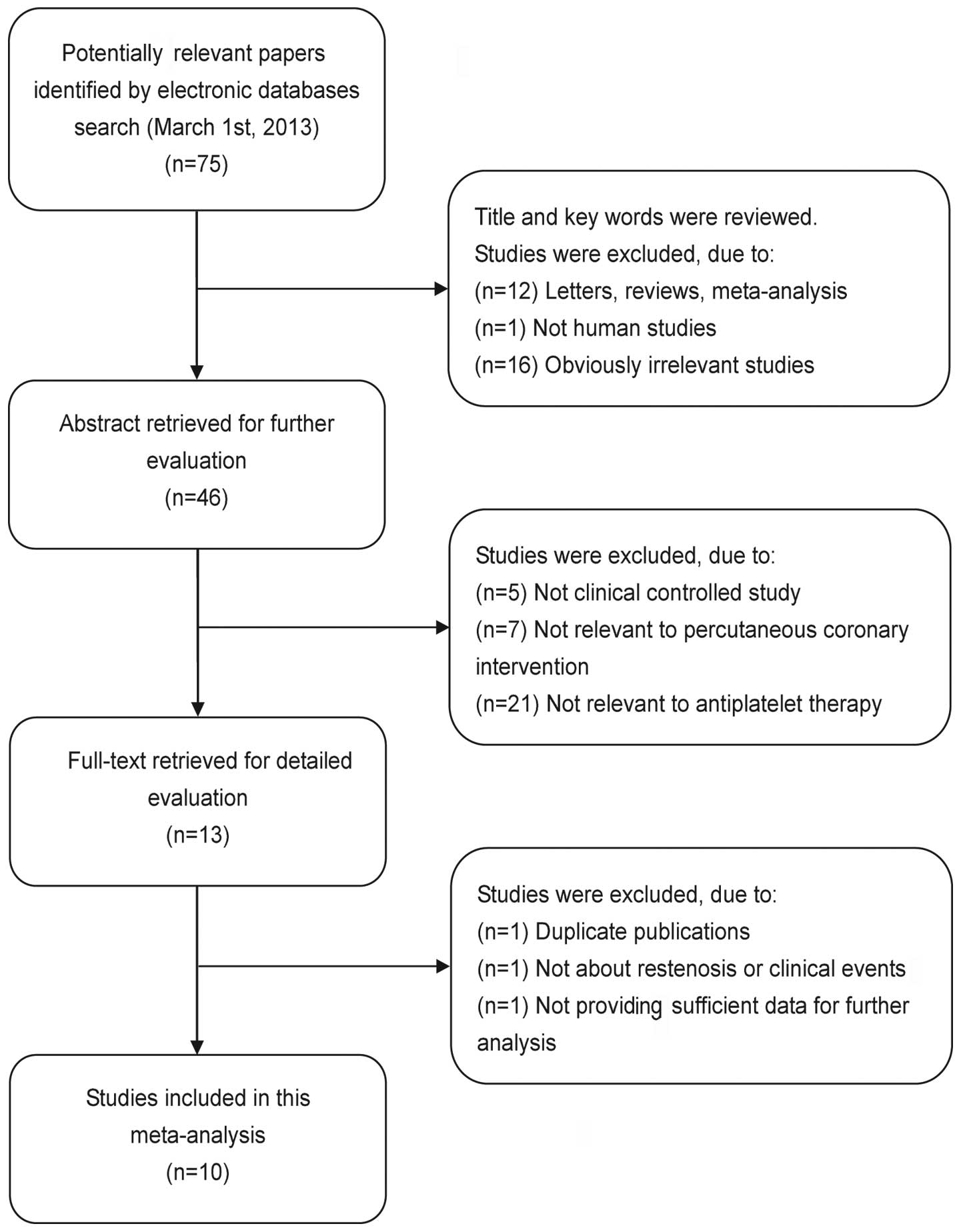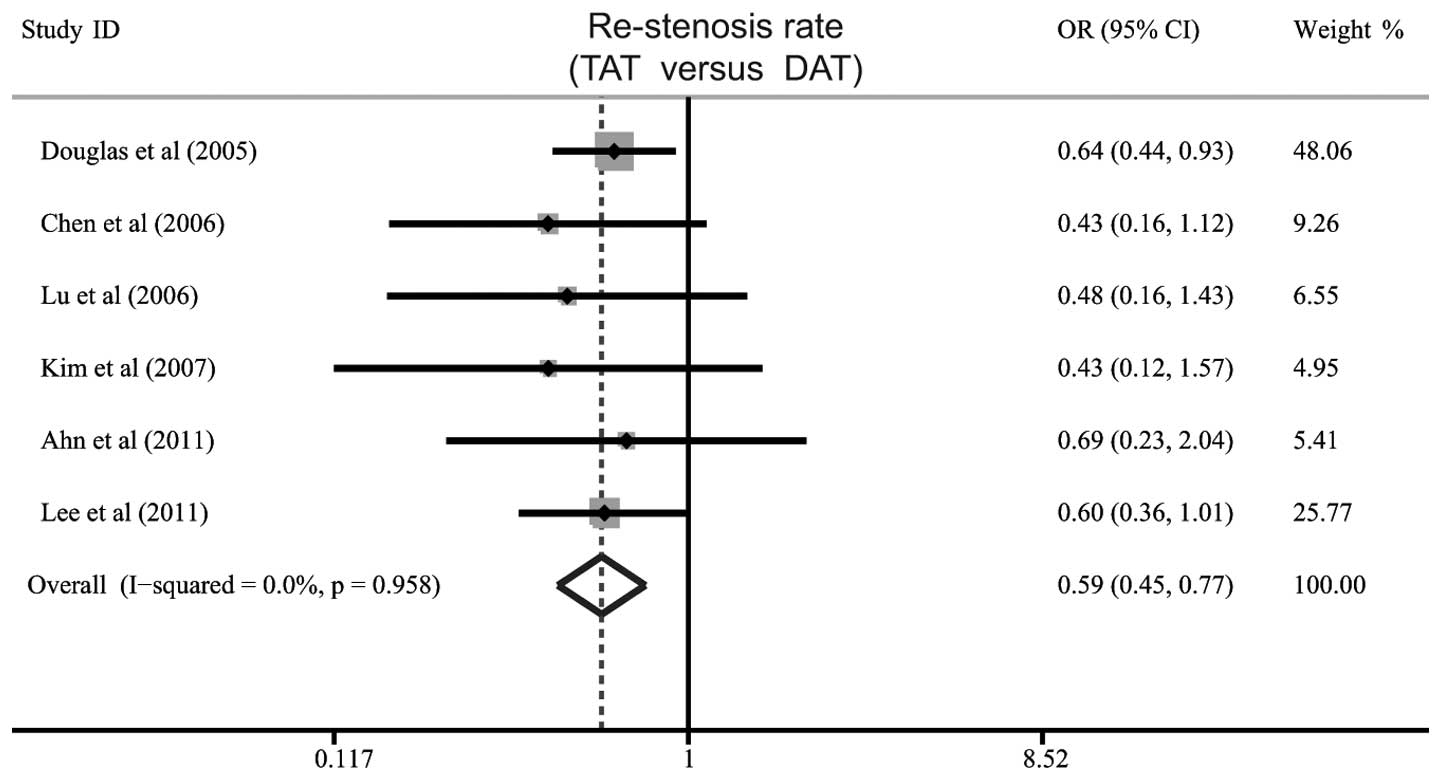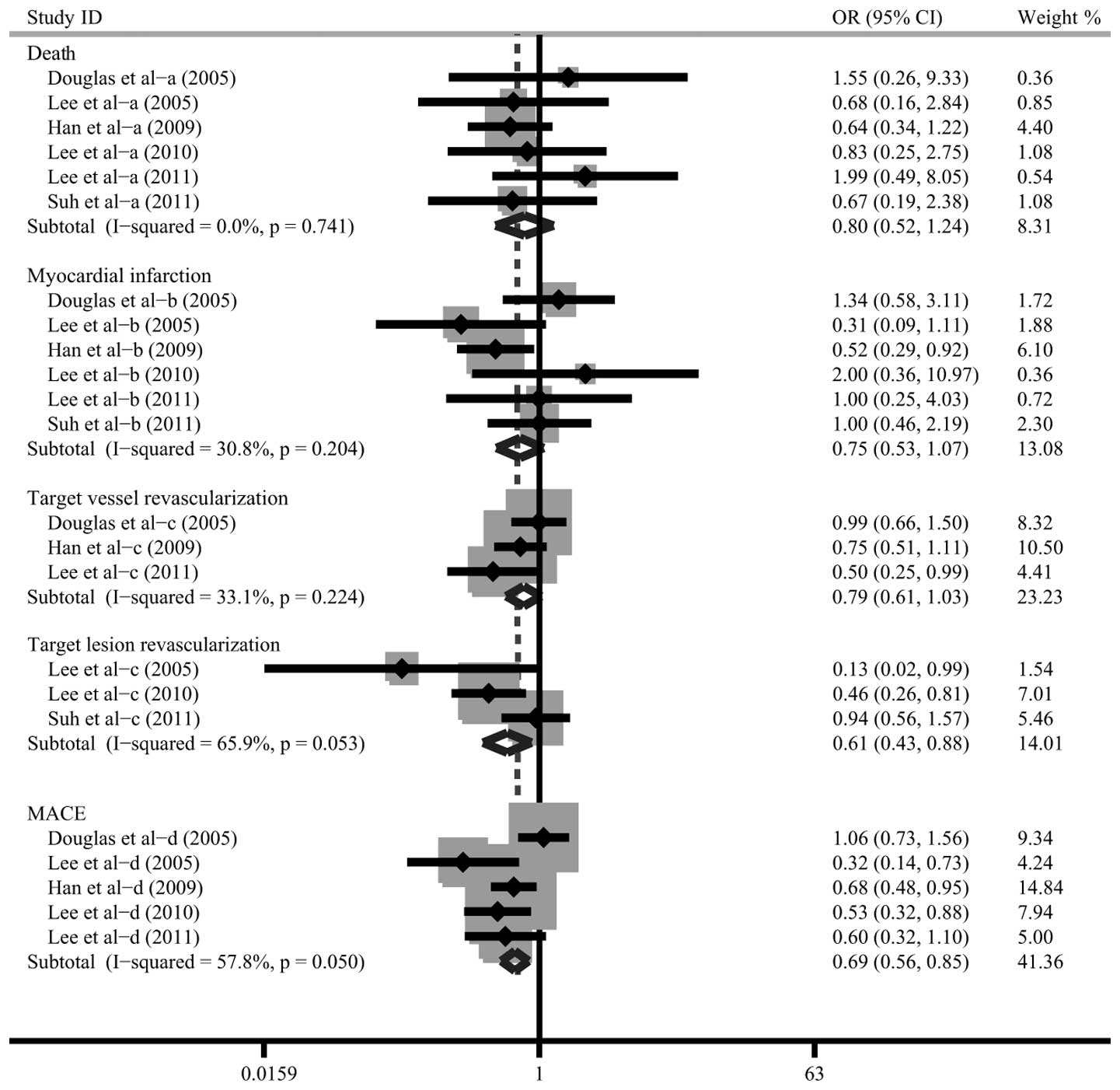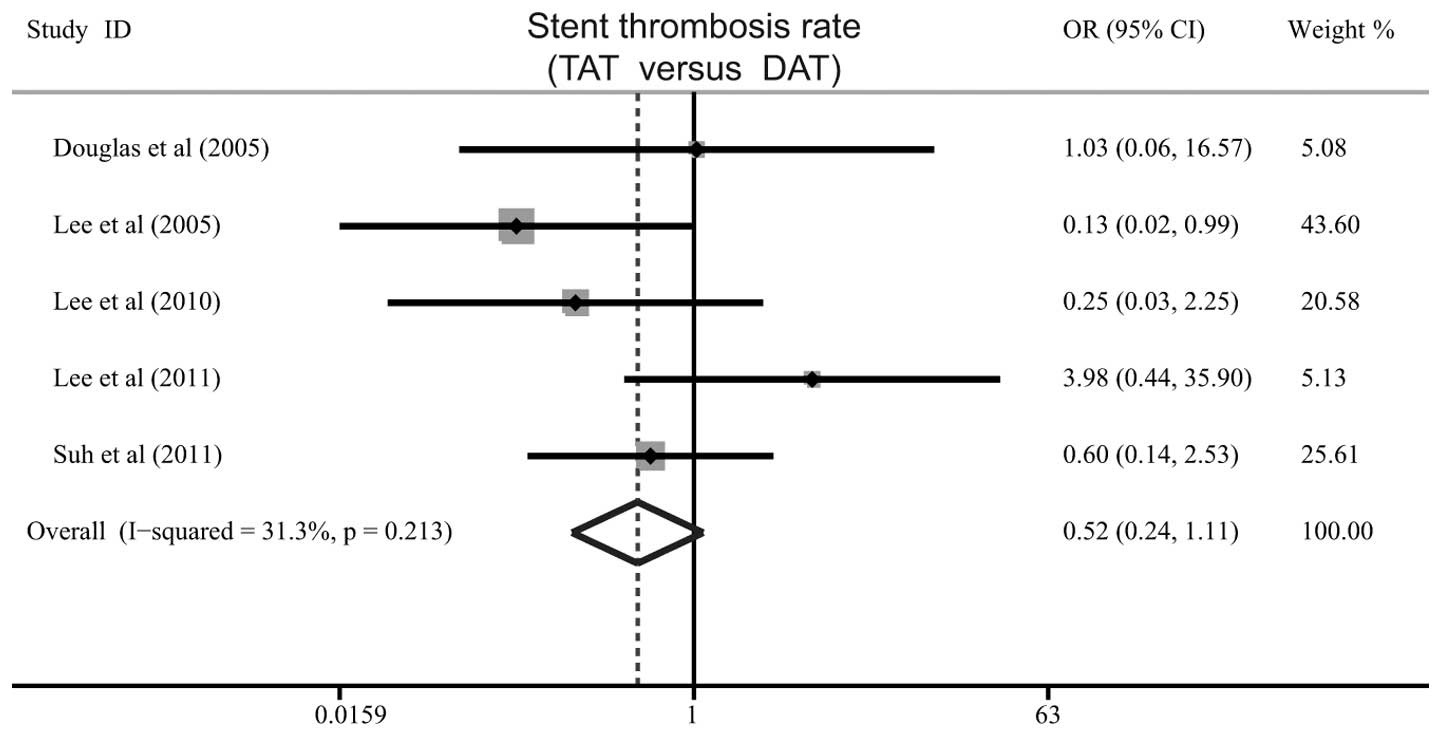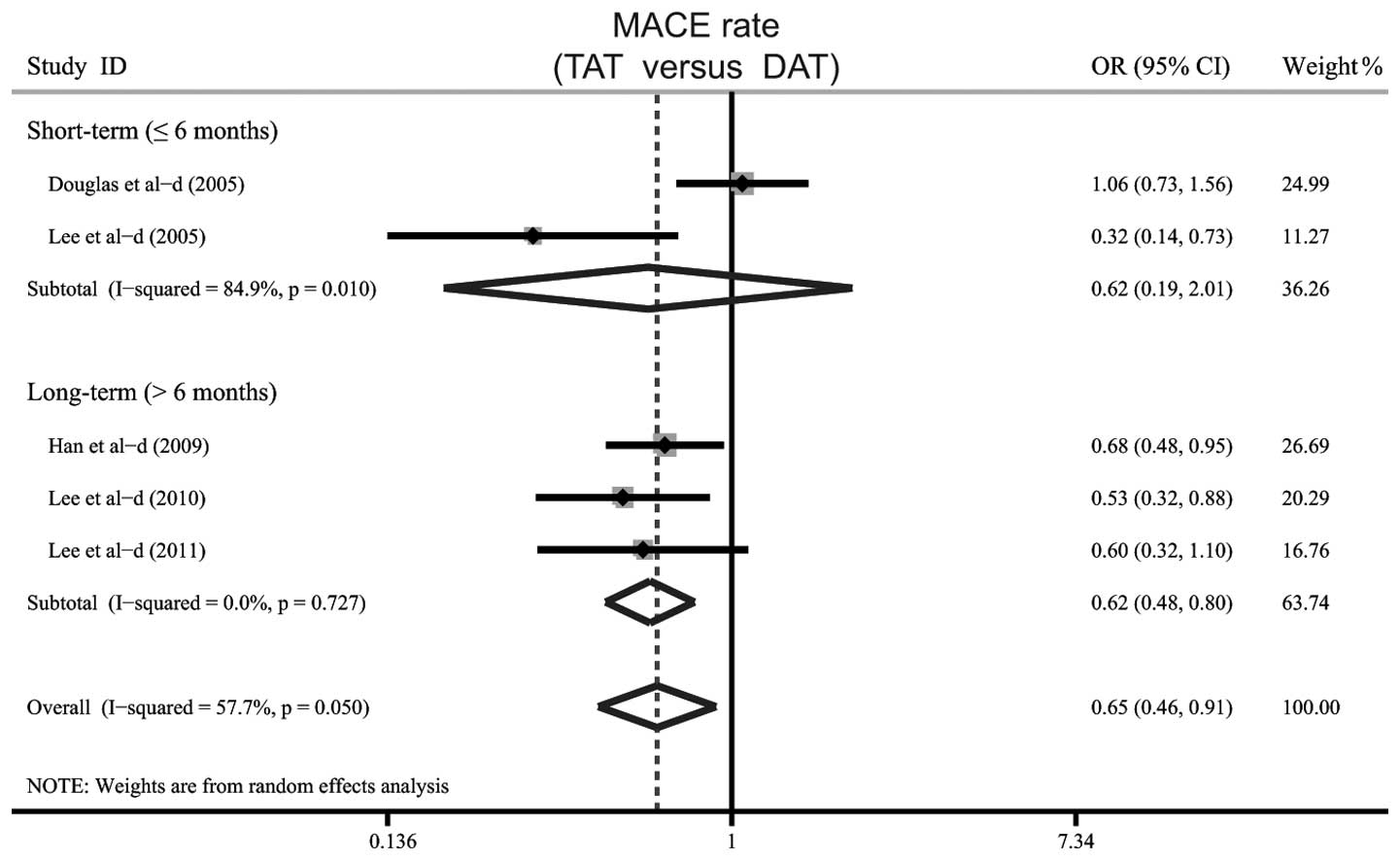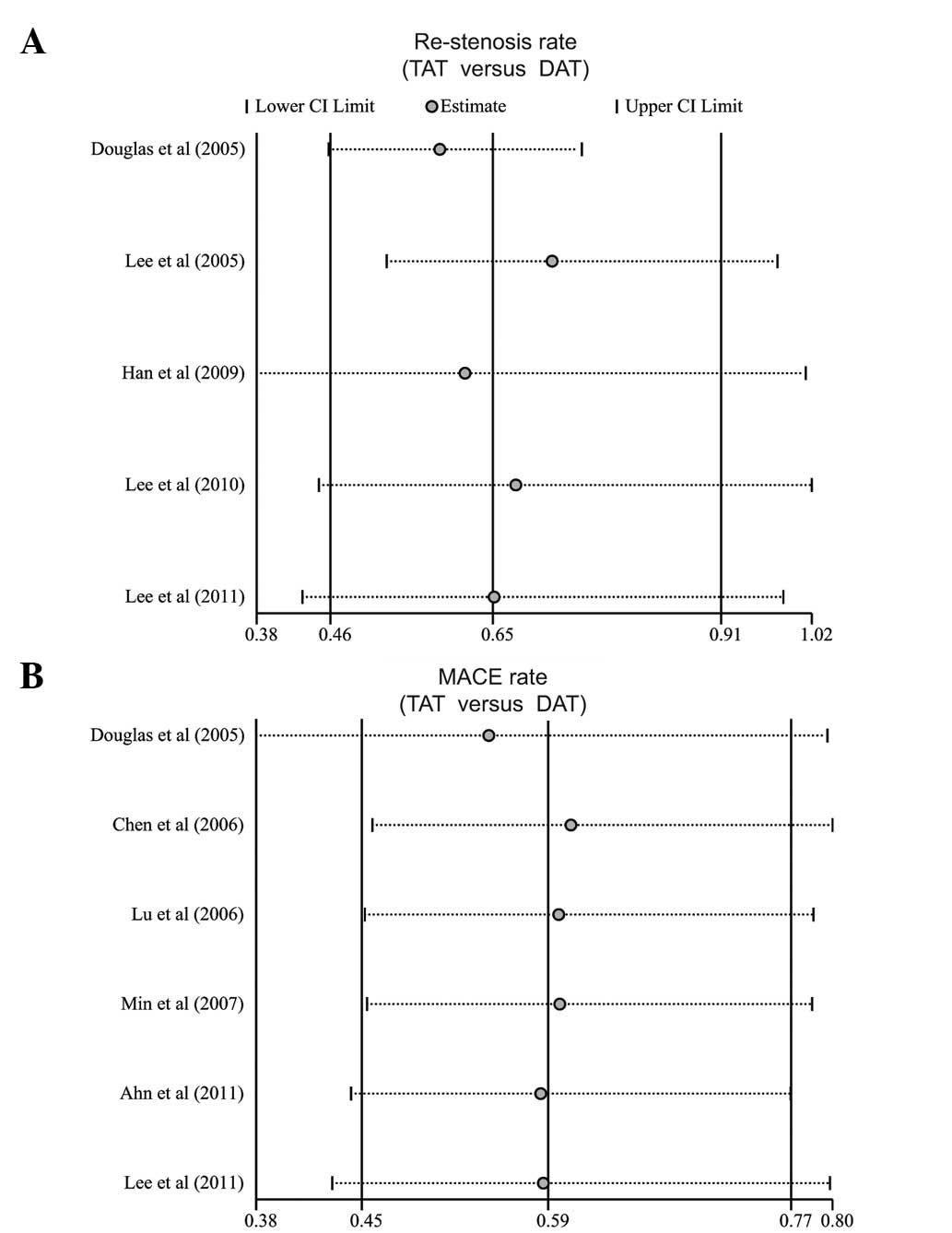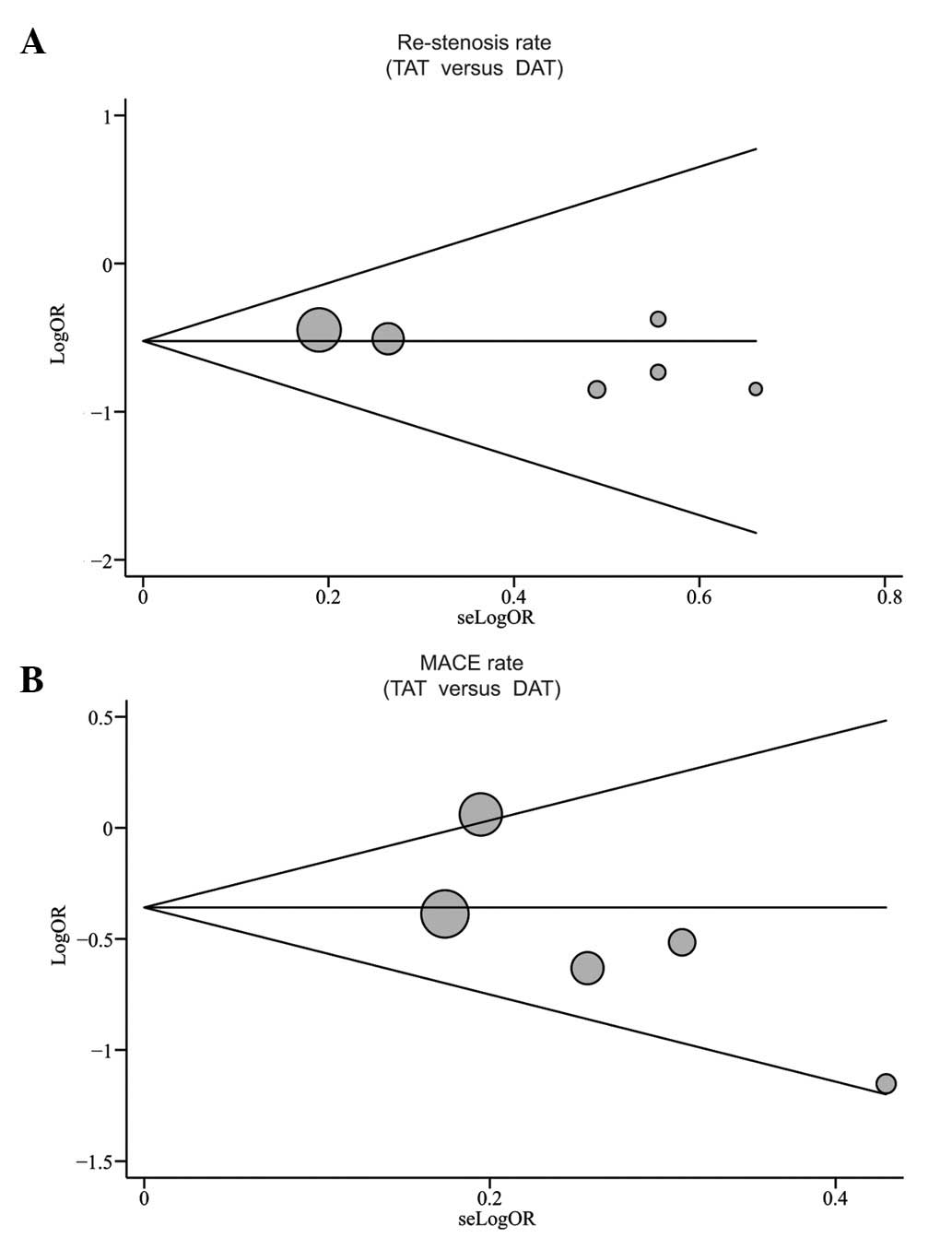|
1.
|
Aradi D, Komócsi A, Price MJ, et al:
Efficacy and safety of intensified antiplatelet therapy on the
basis of platelet reactivity testing in patients after percutaneous
coronary intervention: Systematic review and meta-analysis. Int J
Cardiol. Jun 15–2012.(Epub ahead of print).
|
|
2.
|
Meryon I, Patel N, Millane T and Varma C:
Normal coronary angiography and primary percutaneous coronary
intervention for ST elevation myocardial infarction: a literature
review and audit findings. Int J Clin Pract. 64:1245–1251. 2010.
View Article : Google Scholar
|
|
3.
|
Mercado N and Serruys PW: A
meta-analytical approach for the treatment of in-stent restenosis.
Eur Heart J. 24:217–218. 2003. View Article : Google Scholar : PubMed/NCBI
|
|
4.
|
Meier B, Bachmann D and Lüscher T: 25
years of coronary angioplasty: almost a fairy tale. Lancet.
361:5272003.PubMed/NCBI
|
|
5.
|
Mrdovic I, Savic L, Lasica R, et al:
Usefulness of the RISK-PCI score to predict stent thrombosis in
patients treated with primary percutaneous coronary intervention
for ST-segment elevation myocardial infarction: a substudy of the
RISK-PCI trial. Heart Vessels. 28:424–433. 2013. View Article : Google Scholar
|
|
6.
|
Gurbel PA and Tantry US: Aspirin and
clopidogrel resistance: consideration and management. J Interv
Cardiol. 19:439–448. 2006. View Article : Google Scholar : PubMed/NCBI
|
|
7.
|
Takahashi S, Kaneda H, Tanaka S, et al:
Late angiographic stent thrombosis after sirolimus-eluting stent
implantation. Circ J. 71:226–228. 2007. View Article : Google Scholar : PubMed/NCBI
|
|
8.
|
Suh JW, Lee SP, Park KW, et al:
Multicenter randomized trial evaluating the efficacy of cilostazol
on ischemic vascular complications after drug-eluting stent
implantation for coronary heart disease: results of the CILON-T
(influence of CILostazol-based triple antiplatelet therapy ON
ischemic complication after drug-eluting stenT implantation) trial.
J Am Coll Cardiol. 57:280–289. 2011.
|
|
9.
|
Regensteiner JG and Stewart KJ:
Established and evolving medical therapies for claudication in
patients with peripheral arterial disease. Nat Clin Pract
Cardiovasc Med. 3:604–610. 2006. View Article : Google Scholar : PubMed/NCBI
|
|
10.
|
Jeong YH, Lee SW, Choi BR, et al:
Randomized comparison of adjunctive cilostazol versus high
maintenance dose clopidogrel in patients with high post-treatment
platelet reactivity: results of the ACCEL-RESISTANCE (Adjunctive
Cilostazol Versus High Maintenance Dose Clopidogrel in Patients
With Clopidogrel Resistance) randomized study. J Am Coll Cardiol.
53:1101–1109. 2009.
|
|
11.
|
Tamhane U, Meier P, Chetcuti S, et al:
Efficacy of cilostazol in reducing restenosis in patients
undergoing contemporary stent based PCI: a meta-analysis of
randomised controlled trials. EuroIntervention. 5:384–393. 2009.
View Article : Google Scholar : PubMed/NCBI
|
|
12.
|
Lee SW, Park SW, Hong MK, et al: Triple
versus dual antiplatelet therapy after coronary stenting: impact on
stent thrombosis. J Am Coll Cardiol. 46:1833–1837. 2005. View Article : Google Scholar : PubMed/NCBI
|
|
13.
|
Higgins JP and Thompson SG: Quantifying
heterogeneity in a meta-analysis. Stat Med. 21:1539–1558. 2002.
View Article : Google Scholar : PubMed/NCBI
|
|
14.
|
Zintzaras E and Ioannidis JP:
Heterogeneity testing in meta-analysis of genome searches. Genet
Epidemiol. 28:123–137. 2005. View Article : Google Scholar : PubMed/NCBI
|
|
15.
|
DerSimonian R and Kacker R: Random-effects
model for meta-analysis of clinical trials: an update. Contemp Clin
Trials. 28:105–114. 2007. View Article : Google Scholar : PubMed/NCBI
|
|
16.
|
Mantel N and Haenszel W: Statistical
aspects of the analysis of data from retrospective studies of
disease. J Natl Cancer Inst. 22:719–748. 1959.PubMed/NCBI
|
|
17.
|
Peters JL, Sutton AJ, Jones DR, Abrams KR
and Rushton L: Comparison of two methods to detect publication bias
in meta-analysis. JAMA. 295:676–680. 2006. View Article : Google Scholar : PubMed/NCBI
|
|
18.
|
Ahn CM, Hong SJ, Park JH, Kim JS and Lim
DS: Cilostazol reduces the progression of carotid intima-media
thickness without increasing the risk of bleeding in patients with
acute coronary syndrome during a 2-year follow-up. Heart Vessels.
26:502–510. 2011.PubMed/NCBI
|
|
19.
|
Chen YD, Lu YL, Jin ZN, Yuan F and Lu SZ:
A prospective randomized antiplatelet trial of cilostazol versus
clopidogrel in patients with bare metal stent. Chin Med J (Engl).
119:360–366. 2006.PubMed/NCBI
|
|
20.
|
Douglas JS Jr, Holmes DR Jr, Kereiakes DJ,
et al: Coronary stent restenosis in patients treated with
cilostazol. Circulation. 112:2826–2832. 2005. View Article : Google Scholar : PubMed/NCBI
|
|
21.
|
Han Y, Li Y, Wang S, et al: Cilostazol in
addition to aspirin and clopidogrel improves long-term outcomes
after percutaneous coronary intervention in patients with acute
coronary syndromes: a randomized, controlled study. Am Heart J.
157:733–739. 2009. View Article : Google Scholar
|
|
22.
|
Kim JY, Lee K, Shin M, et al: Cilostazol
could ameliorate platelet responsiveness to clopidogrel in patients
undergoing primary percutaneous coronary intervention. Circ J.
71:1867–1872. 2007. View Article : Google Scholar
|
|
23.
|
Lee SW, Chun KJ, Park SW, et al:
Comparison of triple anti-platelet therapy and dual antiplatelet
therapy in patients at high risk of restenosis after drug-eluting
stent implantation (from the DECLARE-DIABETES and -LONG Trials). Am
J Cardiol. 105:168–173. 2010. View Article : Google Scholar : PubMed/NCBI
|
|
24.
|
Lee SW, Park SW, Kim YH, et al: A
randomized, double-blind, multicenter comparison study of triple
antiplatelet therapy with dual antiplatelet therapy to reduce
restenosis after drug-eluting stent implantation in long coronary
lesions: results from the DECLARE-LONG II (Drug-Eluting Stenting
Followed by Cilostazol Treatment Reduces Late Restenosis in
Patients with Long Coronary Lesions) trial. J Am Coll Cardiol.
57:1264–1270. 2011.
|
|
25.
|
Lu YL, Chen YZ, Lv SZ, Pan WZ and Liu X:
Cilostazol prevention in elderly coronary heart disease patients
with coronary bare metal stent restenosis after effect. Chin J
Geriatr. 25:537–538. 2006.(In Chinese).
|
|
26.
|
Schleinitz MD, Olkin I and Heidenreich PA:
Cilostazol, clopidogrel or ticlopidine to prevent sub-acute stent
thrombosis: a meta-analysis of randomized trials. Am Heart J.
148:990–997. 2004. View Article : Google Scholar : PubMed/NCBI
|
|
27.
|
Smith SC Jr, Dove JT, Jacobs AK, et al:
ACC/AHA guidelines for percutaneous coronary intervention (revision
of the 1993 PTCA guidelines)-executive summary: a report of the
American College of Cardiology/American Heart Association task
force on practice guidelines (Committee to revise the 1993
guidelines for percutaneous transluminal coronary angioplasty)
endorsed by the Society for Cardiac Angiography and Interventions.
Circulation. 103:3019–3041. 2001.
|
|
28.
|
Singh I, Shafiq N, Pandhi P, et al: Triple
antiplatelet therapy vs. dual antiplatelet therapy in patients
undergoing percutaneous coronary intervention: an evidence-based
approach to answering a clinical query. Br J Clin Pharmacol.
68:4–13. 2009. View Article : Google Scholar
|
|
29.
|
Biondi-Zoccai GG, Lotrionte M, Anselmino
M, et al: Systematic review and meta-analysis of randomized
clinical trials appraising the impact of cilostazol after
percutaneous coronary intervention. Am Heart J. 155:1081–1089.
2008. View Article : Google Scholar : PubMed/NCBI
|
|
30.
|
Friedland SN, Eisenberg MJ and Shimony A:
Meta-analysis of randomized controlled trials on effect of
cilostazol on restenosis rates and outcomes after percutaneous
coronary intervention. Am J Cardiol. 109:1397–1404. 2012.
View Article : Google Scholar : PubMed/NCBI
|
|
31.
|
Hong SJ, Choi SC, Ahn CM, Park JH, Kim JS
and Lim DS: Telmisartan reduces neointima volume and pulse wave
velocity 8 months after zotarolimus-eluting stent implantation in
hyper-tensive type 2 diabetic patients. Heart. 97:1425–1432.
2011.
|
|
32.
|
Hashiguchi M, Ohno K, Nakazawa R, Kishino
S, Mochizuki M and Shiga T: Comparison of cilostazol and
ticlopidine for one-month effectiveness and safety after elective
coronary stenting. Cardiovasc Drugs Ther. 18:211–217. 2004.
View Article : Google Scholar : PubMed/NCBI
|















